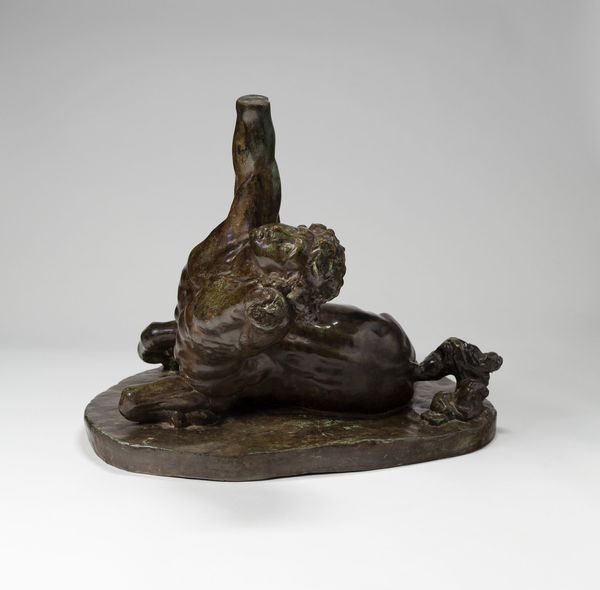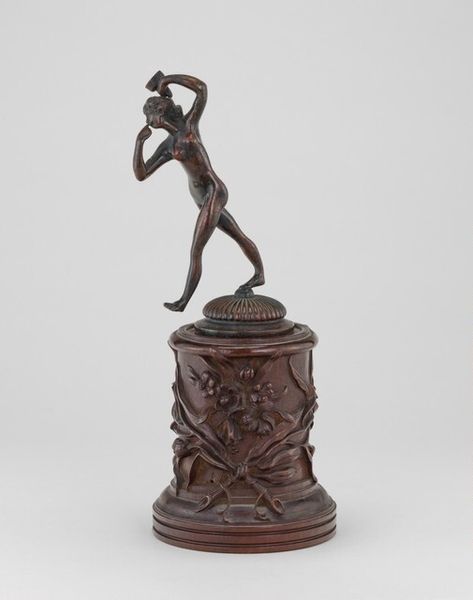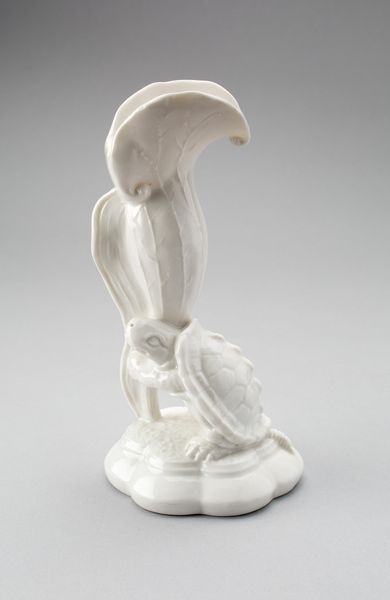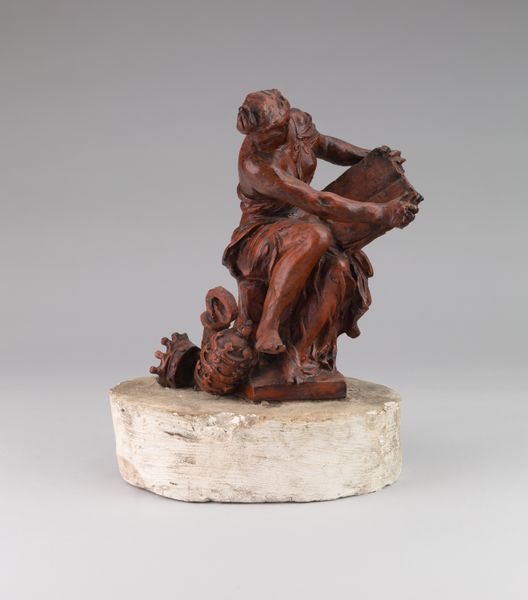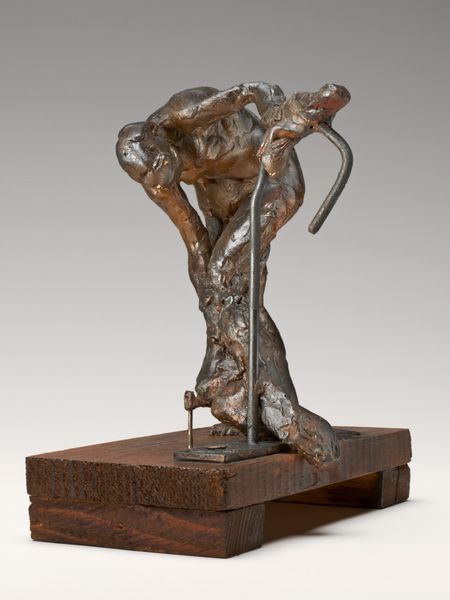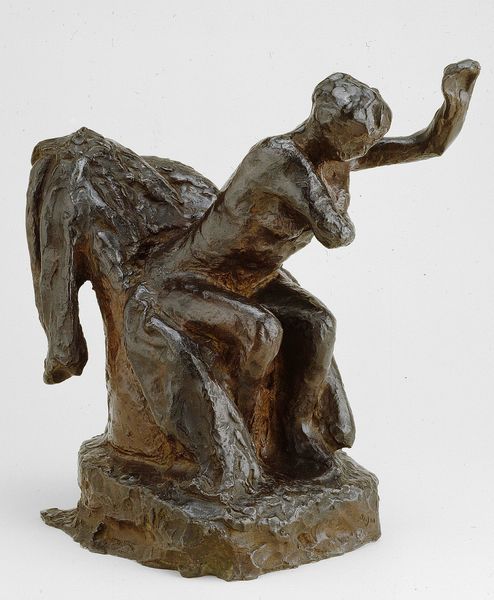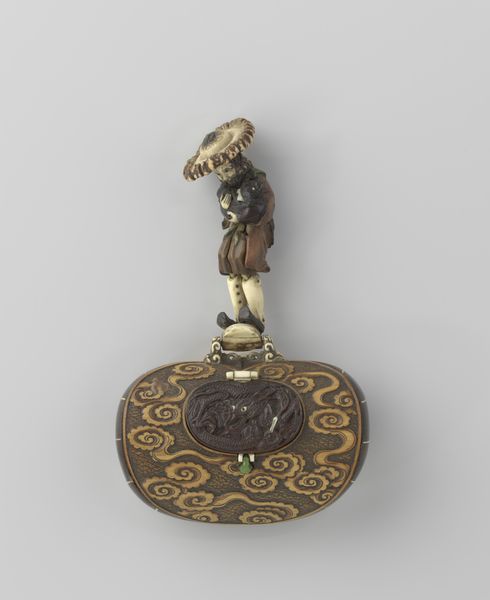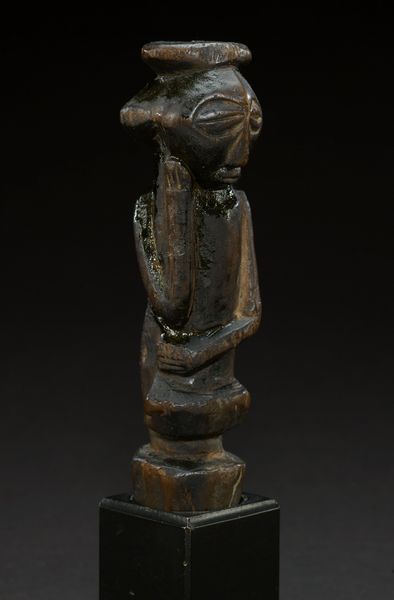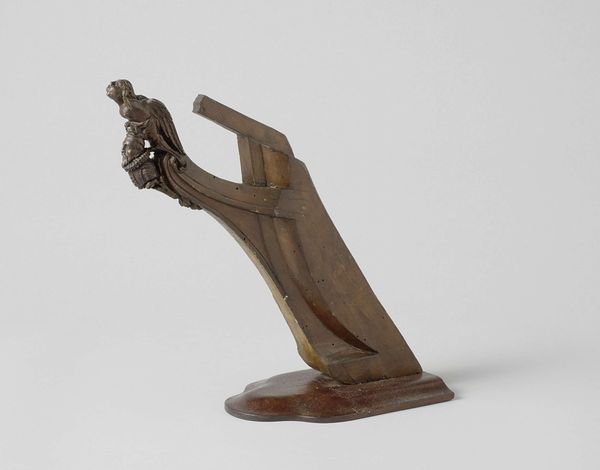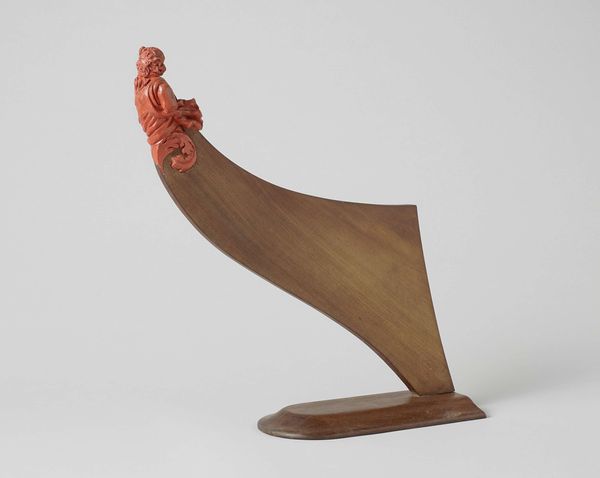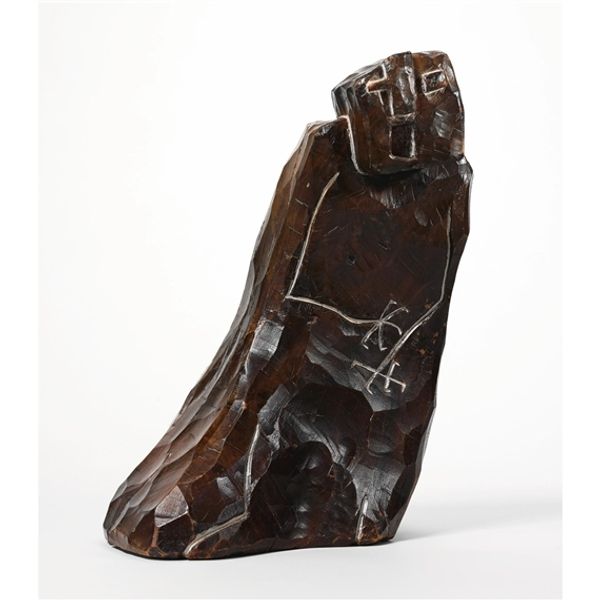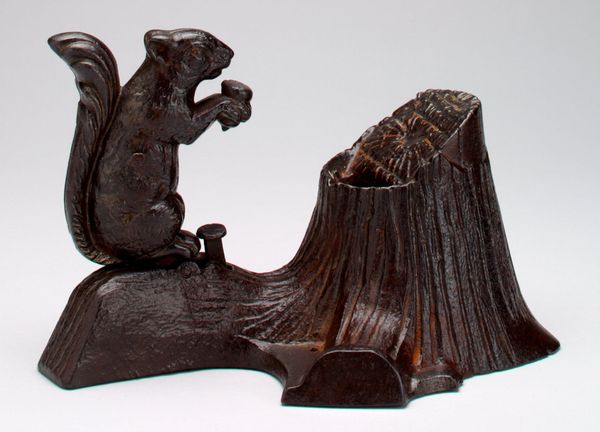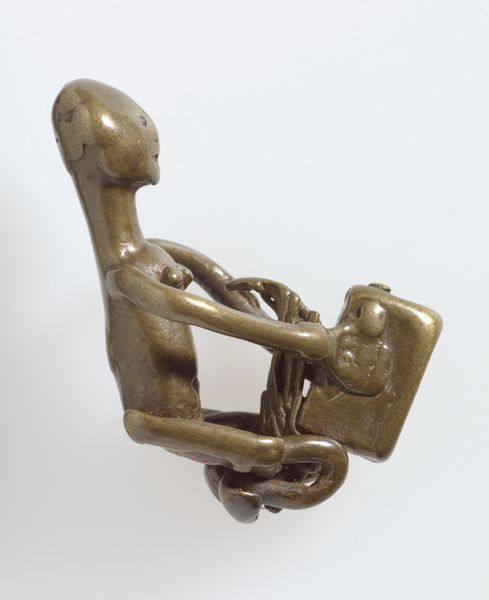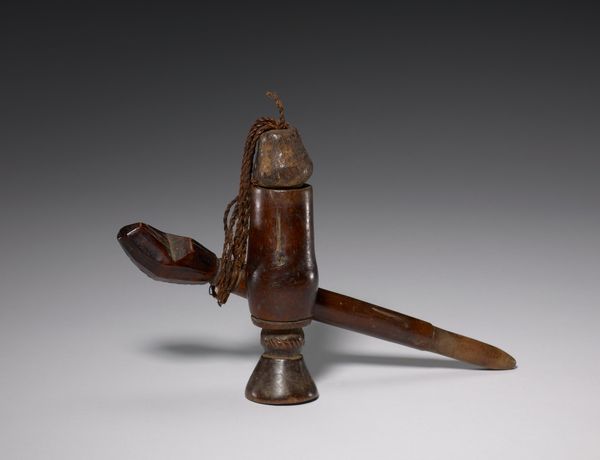
ceramic, porcelain, sculpture
#
ceramic
#
porcelain
#
figuration
#
sculpture
#
ceramic
#
men
#
decorative-art
Dimensions: 25.4 × 15.2 × 18.4 cm (10 × 6 × 7 1/4 in.)
Copyright: Public Domain
Curator: Here we have an anonymous ceramic doorstop, dating roughly from 1840 to 1860. What strikes you about it? Editor: The glossy brown glaze gives it such a homey, warm feeling. Almost like a comforting presence at the threshold. And that squat stance on the patterned base—it feels simultaneously sturdy and charming. Curator: Exactly! Dogs, you see, have held varied symbolisms over time and across cultures, and are frequently associated with guarding entrances. But its purpose, as a utilitarian object, is equally intriguing. Editor: Absolutely, its existence reflects a socio-economic dimension. It suggests a particular era and household. Owning this functional, mass-produced art suggests a burgeoning consumer culture in America during this period. And how perceptions of animals shifted to domestic companions. Curator: Consider this: canine images have morphed from celestial guides and protectors in earlier eras to symbols of domestic fidelity, with unique visual attributes depending on era. This porcelain spaniel fits squarely within that more modern trend. Editor: Do you think there's commentary implied by immortalizing him this way, about industrial production? Perhaps the artist seeks to humanize industry and commodification, inviting consumers to connect their own desires with capitalist ideals? Curator: The fact that we don't know the sculptor leaves room to interpret his intention as aligned or against emergent American marketing systems. But to me, his anonymity suggests not a rejection, but instead that the value was placed in production over unique creation. It speaks to larger themes, no matter who made him. Editor: Yes, it invites so many perspectives on consumerism! He represents how we consume imagery alongside products to construct personal narratives that justify and amplify larger cultural assumptions. It's deceptively loaded, isn't it? Curator: I think these tensions between home security, commodity culture, domestic cuteness, and canine symbolism are what still draws us to it. Its power resides in this historical resonance and accessible design, and our contemporary lens transforms what was once common into commentary on capitalist imagery. Editor: The piece creates compelling bridges to contemplate ideas of class, and of course, pet ownership as it changes over time. Thanks, that really opened it up. Curator: And it helps us reflect on the powerful and complex role seemingly simple imagery plays in larger economic structures. It has been a pleasure to dive into these issues with you.
Comments
No comments
Be the first to comment and join the conversation on the ultimate creative platform.
